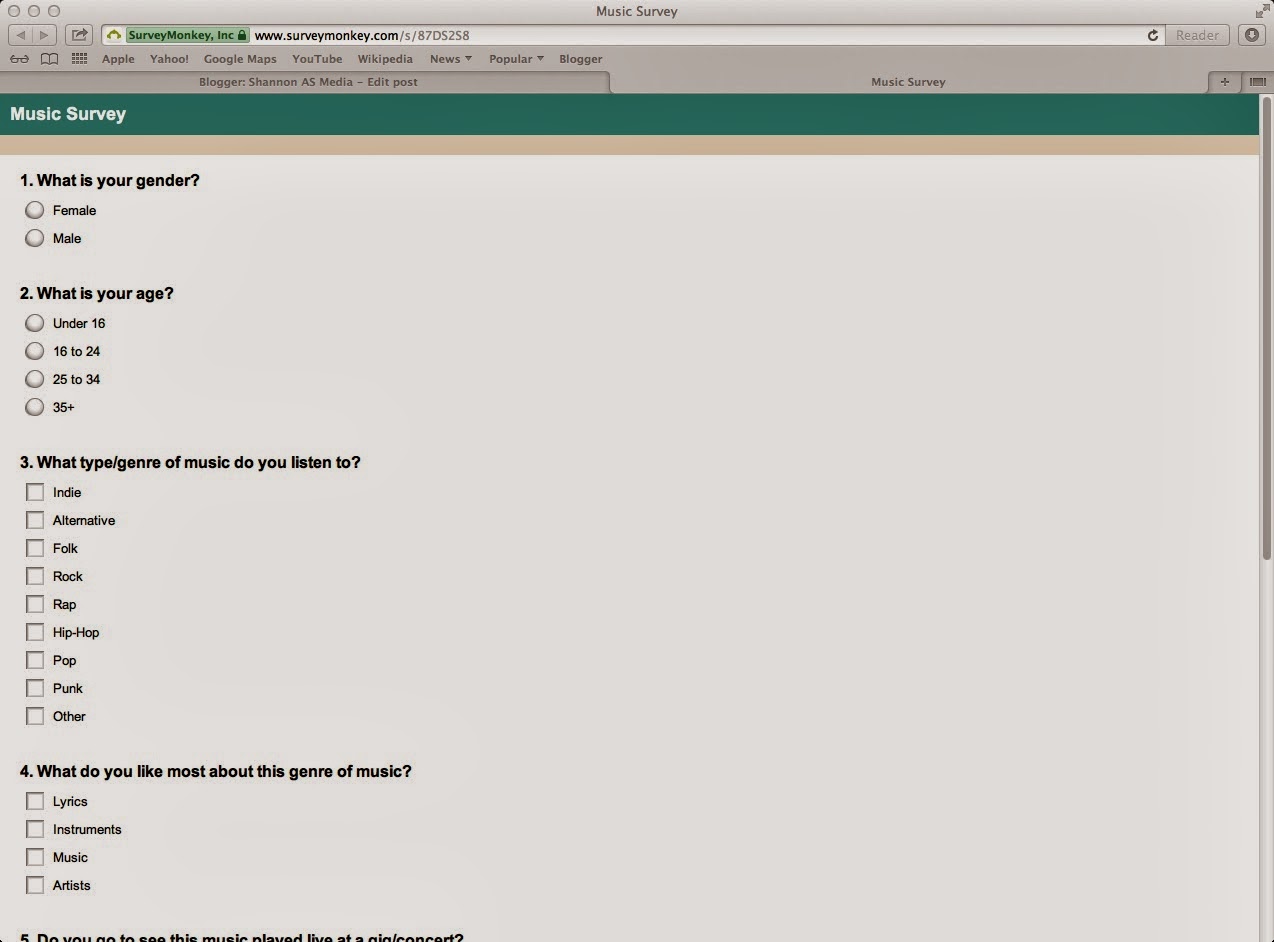Interview Format:
For my double page spread I am going to have an interview my
cover model, Megan, I have chosen this format as I think that readers interact
more with an interview as they can get to know the artist more personally-
people like to think that they know the artists and celebrities, like to think
of them as ‘friends’. Before getting together my interview with Megan, I needed
to research into the typical structure used which is;
Question asked
by interviewer
Answer by
interviewee
Response to Q or
Q asked by interviewer
Answer to
response or Q
........etc
I used this structure for my own interview to make it come
across feasible. I then looked into the convention and typical questions asked
in a music interview to form a basis for mine, I wanted them to be informative
to the reader so they find out all about Megan.
Questions typically asked:
‘You’ve co-written songs for Pussycat Dolls and Jennifer
Hudson- any more plans for collaborations with pop’s er...elite?’ –NME Magazine interview with Cee-lo Green
‘Tell us about your forthcoming album, ‘The Lady Killer’. It’s been a few years in the making....’ –NME Magazine interview with Cee-lo Green
‘If you haven’t been making music , what have you been
listening to?’ –NME Magazine
interview with Matt Helders
‘Could any of your songs end up on a solo album?’ –NME Magazine interview with Matt Helders
‘What’s the image?’ –NME Magazine interview with Miles Kane
‘Is there a future for the Puppets?’ –NME Magazine interview with Miles Kane
‘What was your success in this department’ –NME Magazine interview with Miles Kane
From these questions I have found out that the questions
that an interviewer can ask are usually something to do with; the future (hopes
and dreams), discuss their ‘image’, why/how they are successful, singles/albums/music,
dream or actual collaborations etc..
From the research I did into interview layouts and
typical questions asked, this is the interview I put together and did with
Megan- I took tips from the key parts of the question research to use it in my
own. Here is the interview I had with Megan Linford;
What got you into music?
I
really enjoyed watching musicians performing acoustic songs and I loved singing
so I asked my mum if I could pick up a guitar. As soon as she got me my first
guitar I didn’t put it down and my love for music grew from there.
How many instruments can you play? What ones?
My
main instrument is my voice. I then play guitar, ukulele, banjo and piano.
How would you describe your own music style?
I
would describe my music style as modern folk/alternative.
How did you learn to play the instruments?
I
picked up guitar first and taught myself using books and the
Internet,
with piano I had lessons when I was younger so I knew the basics and just
retaught myself everything. I picked up the ukulele 2 years ago and used
YouTube to get me started and as it is a simple instrument it didn’t take long to understand it. The banjo is my most
recent purchase and I have been teaching myself from books with tips from
people I know.
How did you know you were good at singing?
I
wouldn’t consider myself to be good at singing as I find I always just hear the
faults or mistakes in my songs I do. But the reactions people gave me and the
feedback helped reassure music was something to stick at.
Would you say your music style has influenced your fashion
style?
My
music style has definitely influenced my fashion sense; especially more
recently I’ve just given up spending lots of money on clothes in shops like
Topshop instead go to charity shops and search for cheap things. This is pretty
sad but the crowds and people who listen to the sort of music I like tend to be
similar in the sense of wearing whatever.
How do you feel when on stage performing?
When
on stage I am the most happy, it feels natural and I love seeing and hearing
the reactions from the people watching, especially when its constructive
criticism or tips to improve. I usually get nerves no matter how big a gig is
but as soon as I’m up there it turns to adrenaline and I absolutely love it.
If you could sing/duet with anyone dead or alive who would you
choose?
If
I could sing with anyone it would be Laura Marling, I base a lot of my music
around her, so to actually sing with her would be incredible.
What do you hope to achieve in the future?
I
hope to be gigging and playing festivals where a large number of people can
appreciate my music. I don’t want fame I just want to play music that people
hopefully appreciate. I hope to make a career out of my passion for something I
love.








.jpeg)




